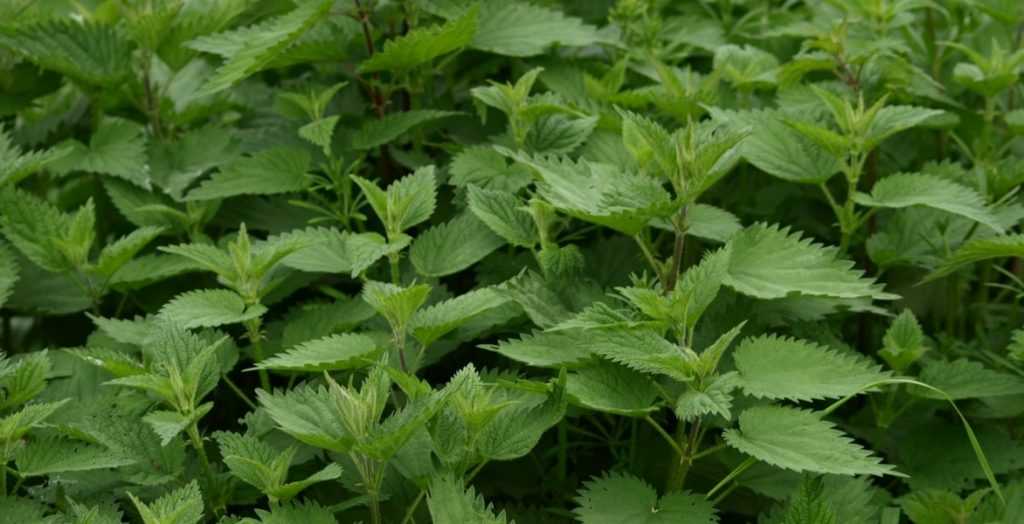
How to Make Nettle Fertiliser - Tutorial
recipe and uses
Contents
Nettle tea is one of the fermented extracts that act as biostimulants, helping to boost plants’ immune defences and growth, such as tomatoes, while also repelling parasitic pests like aphids and preventing diseases. These are excellent alternatives to chemical fertilisers and pesticides, which are harmful to the environment.
How to make nettle tea? It’s very simple, effective and free, requiring just a little attention during fermentation.
Also discover Olivier’s video “why keep nettles in your garden?”
The necessary equipment
To make 10 litres of nettle tea, you will need:
-
- a bucket or any other non-metallic container for making the tea
- another container for filtering
- a cloth
- some string
- fresh nettles
- non-calcareous and non-chlorinated water (ideally rainwater)
- a stick
- two 5-litre containers
- a pair of gloves
- secateurs or shears
- a funnel
- kitchen scales
- a tablespoon
Read also
Nettle: A Plant with Many BenefitsMaking your own plant fertiliser, step by step
1) The Recipe
Always follow this proportion:
- 1 kg of fresh nettles
- 10 litres of water
Of course, you can adjust these quantities according to your needs while maintaining the same proportions.
Ideally, use rainwater at a mild temperature, between 12 and 25°C. If not, tap water can be used, but it should not be hard or chlorinated:
- Hard water can clog the stomata of the leaves, limiting the absorption of the fermented extract by the plants. If your water is very hard, add white vinegar at a rate of 25 cl per 30 litres of water to rebalance the pH.
- To remove chlorine, let the water sit for 2 to 4 days, stirring occasionally to allow the volatile chlorine to evaporate completely.
Choose a slightly oversized container (e.g., 15 litres for preparing 10 litres of nettle tea). This makes stirring easier and prevents the nettles from being compacted.
2) Harvesting
Nettles are easily found in the countryside, in most gardens and wild paths. However, they can be harder to find in urban areas, and some well-tended gardens may lack them. Look in fallow land or sow your own nettle patch—even if this might seem unconventional!
Harvesting is best done in early spring, in April or May, when the nettles are still young and of better quality. They should not be in seed, or you risk them sprouting wherever you apply the nettle tea.
Wear gloves to avoid being stung by the urticating prickles. Use secateurs or shears to cut generous handfuls of leaves.
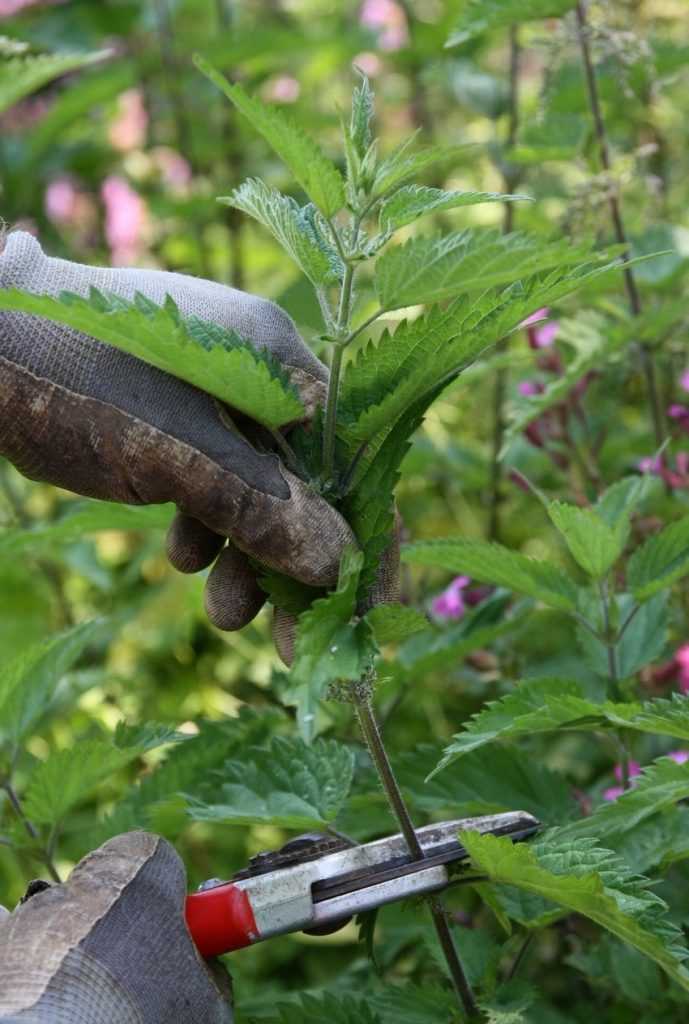
Harvesting nettles: don’t forget your gloves!
3) Preparing the Nettle Tea
It is important to choose a non-metallic container, as fermentation causes oxidation of ferrous metal, which would harm the quality of the fermented extract.
- Place a kitchen scale on a table and tare it with an empty container. Add your nettles until you reach the desired weight. Once you have enough nettles, put them in your bucket. Some gardeners chop the nettles to help release their active compounds, but you can also use them whole. Alternatively, you can place whole nettles in a large potato net, close the bag, and place it in your container. This will help retain most of the leaves during filtration.
- Pour 10 litres of water over the nettles, then cover the bucket with a cloth. The fabric allows air and fermentation gases to pass through.
- Place your container strictly in the shade to prevent overheating and avoid putrefaction.

Left: pouring water over the nettles – Right: placing the bucket in the shade
4) Stirring the Nettle Tea
Stir the nettle tea at least once a day with a stick for 10 minutes. A white foam will form on the surface, indicating fermentation. Do not seal the container tightly, as fermentation gases need to escape.
Some gardeners make their nettle tea in a closed container (anaerobic fermentation), while others leave it uncovered (aerobic fermentation). The latter method is used here, and when done correctly, the nettle tea will have almost no odour.
Fermentation time varies depending on temperature. Fermentation may begin between four to ten days and continues until no more foam appears on the surface, which takes a few more days. Above 25°C, the risk of putrefaction increases, so it’s best to make nettle tea early in the season.
Monitor closely to avoid missing the end of fermentation. As soon as no foam appears after stirring, filter immediately to prevent the extract from putrefying.
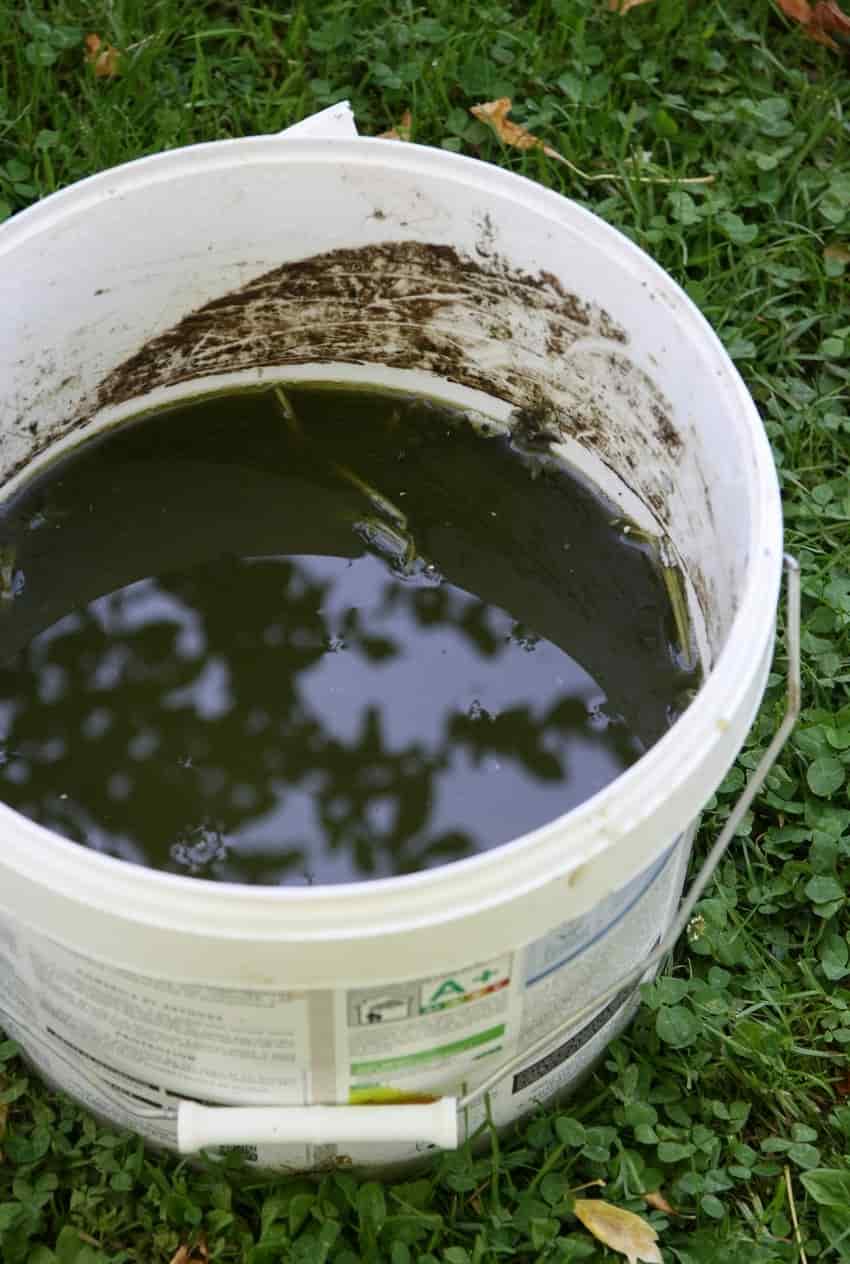
Bucket of nettle tea awaiting filtration
If the smell is foul, your nettle tea has failed, and you’ll need to start over.
5) Filtration
This step is crucial for proper storage. If filtration is poorly done and nettle residue remains, the tea will putrefy. The best method is fine filtration using a cloth or sheet (accept that it will be dedicated to this task!).
- Place a cloth over another container and secure it with a string (just below the bucket rim) to keep it in place.
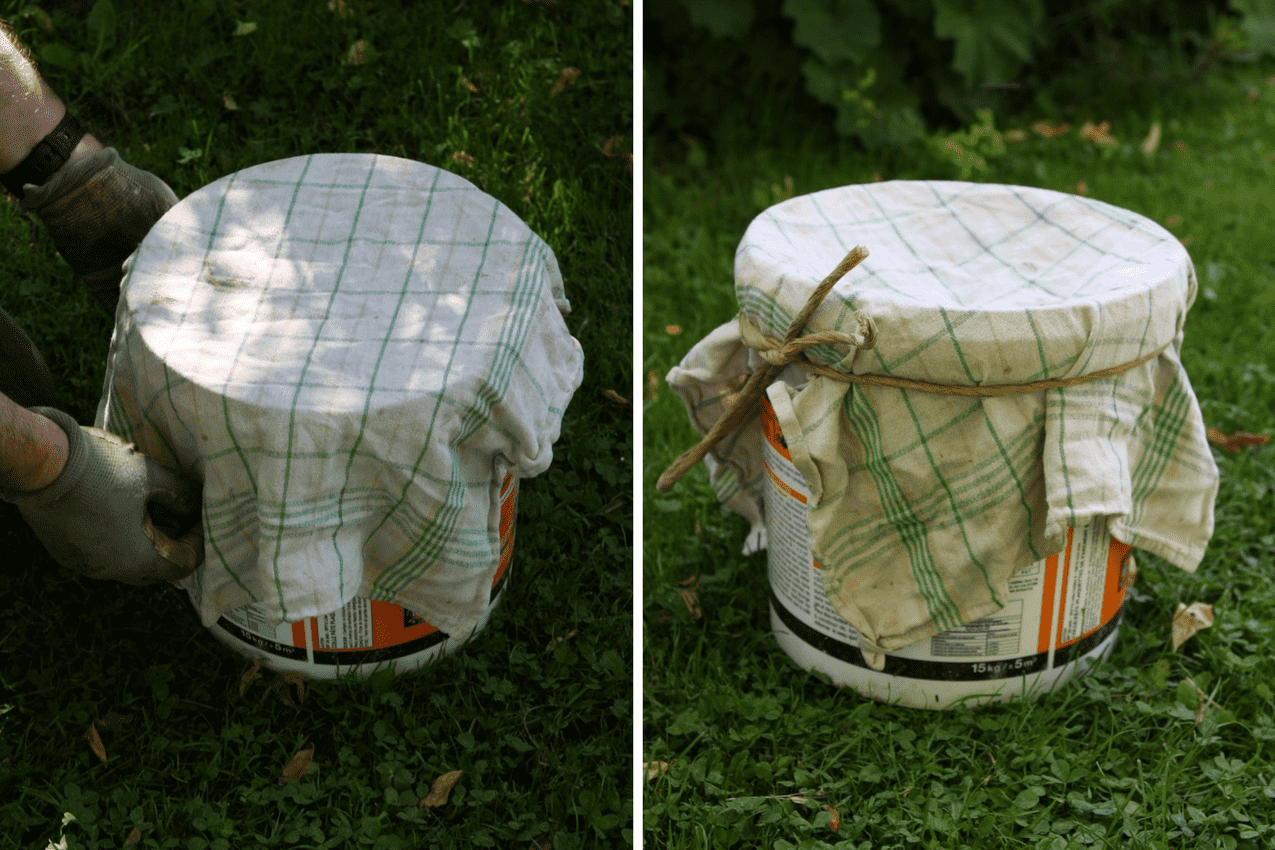
Setting up the cloth before filtering the nettle tea
- Remove the bulk of the nettles (this is where the potato net proves useful). Compost the leftover nettles.
- Pour the nettle tea through the cloth. You can gently scrape the cloth with a spoon to speed up the process.
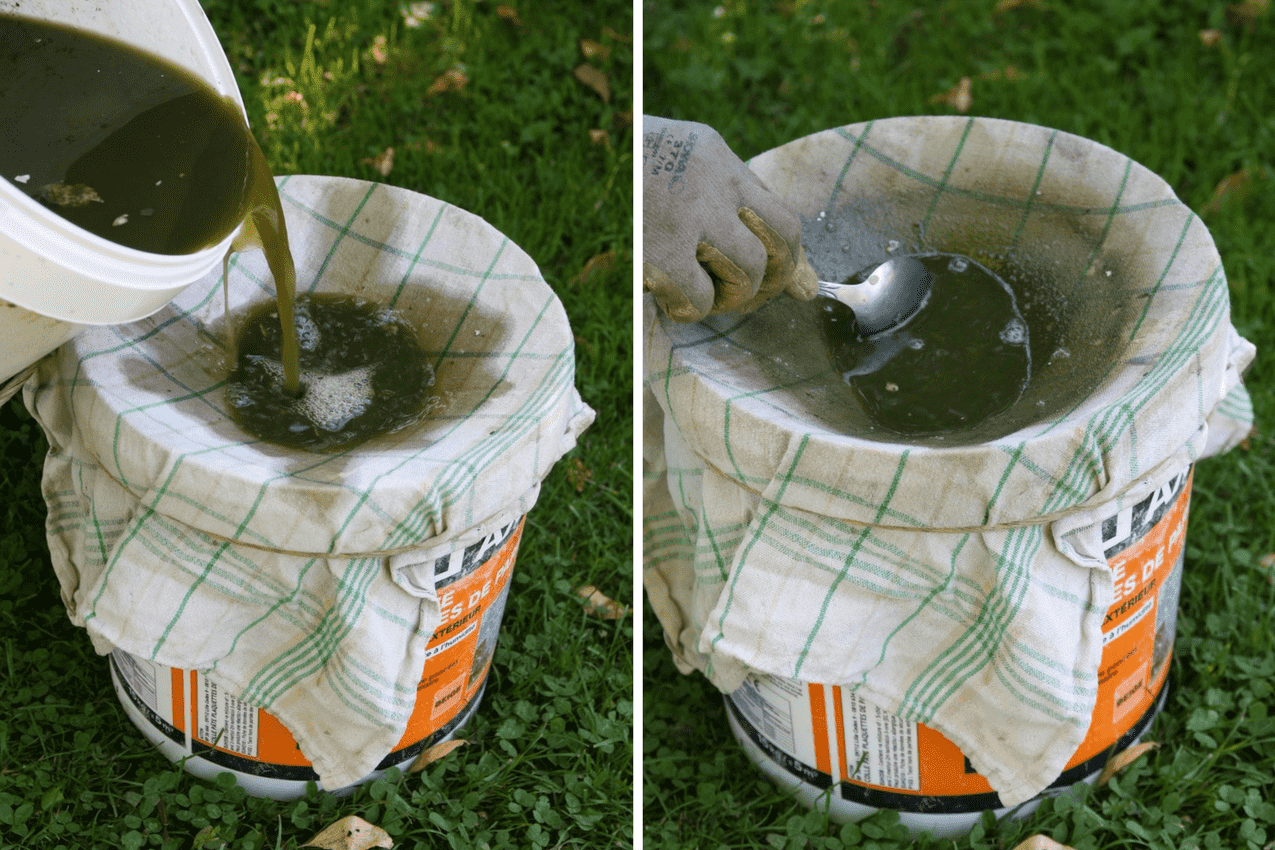
Left: pour your nettle tea through the cloth – Right: scrape lightly to speed up filtration
If you have a sieve, place it over the container and add the cloth on top.
If you plan to use the fermented extract as a spray, ensure the “juice” is free of impurities that could clog the spray nozzle.
6) Transferring the Nettle Tea to Bottles
Using a funnel, pour the filtered nettle tea into opaque (if possible) and airtight bottles, tightening the lids securely.
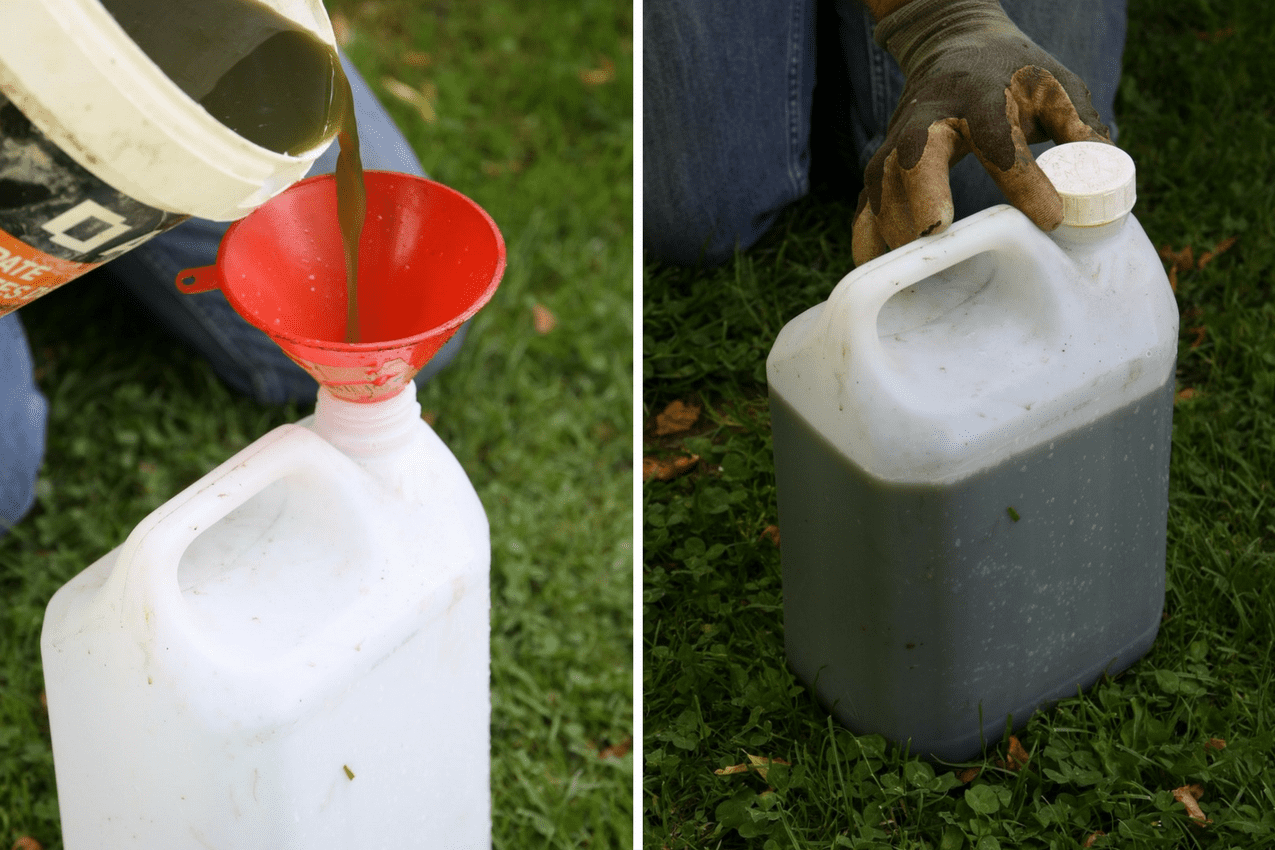
Bottling the fermented extract for storage
Don’t forget to label the bottle with the name of the fermented extract, especially if you make different types!
Storing nettle manure
Liquid manure can be stored for up to one year, ideally in a cellar or in a cool place (around 12°C) and protected from the light. Beyond this period, it may still be usable but will gradually lose its properties over time.
Note that a well-filled container, with as little air as possible inside, preserves better.
It may happen that liquid manure, even when properly filtered, continues fermenting, causing the container to swell. In this case, simply open the container to release the gases before sealing it again.
Read also
Feeding the Soil NaturallyHow to use nettle manure in the vegetable garden
Warning: nettle tea should never be used undiluted as it may burn your plants. It must always be diluted according to its intended use:
- For foliar spraying, to stimulate plants’ immune defences: dilute to 5%, i.e. 25 cl (or 250 ml) of pure nettle tea topped up with water in a 5-litre sprayer.
- For watering to encourage growth: dilute to 10-20%, i.e. 1 litre of pure nettle tea and 9 litres of water for a 10% dilution.
- For soaking to stimulate root development: dilute to 20%, i.e. 50 cl (or 500 ml) of nettle tea and 2 litres of water.
How to apply?
- For foliar spraying: spray the foliage, making sure to cover the undersides of the leaves and the heart of the plants.
- For watering: use a 10-litre watering can and pour the mixture at the base of the plants.
- For soaking: soak the roots of your leafy vegetables or the root balls of your ornamental plants for 30 minutes in a 20% diluted nettle tea solution. Nettle tea can also be added during root dipping. Soaking seeds in undiluted extract for 30 minutes may prevent damping-off and improve germination.
When to apply?
Apply when the plant needs it: after prolonged drought, a hailstorm that may have damaged foliage and caused injuries, etc.
Only spray your extract the day after thorough watering (never on dry soil) and never in full sun. Apply either very early in the morning or late in the evening.
Do not spray when temperatures are below 12°C as the assimilate capacity of leaves and roots is then slowed down. It is also pointless to spray when rain is imminent, as the water would leach your treatment.
Nettle tea should be used in moderation: water every fortnight (only at the start for tomato and other fruit vegetable cultivation) and foliar spray every 2 to 3 weeks is sufficient.
Which vegetables benefit from nettle tea?
- Leafy vegetables: these are the most fond of fermented nettle extract. These include spinach, lettuce, cabbages, leeks, etc.
- Fruit vegetables: use fermented extracts sparingly as their high nitrogen content promotes foliage at the expense of flowers and fruits. It is therefore preferable to use it at the start and then switch, if needed, to another fermented extract such as comfrey as soon as the first flowers appear. Do not use nettle tea on vegetables intended for storage such as squashes: pumpkin, butternut squash, etc. Their shelf life would be significantly reduced.
- Root vegetables: do not use it, as they may rot.
Note that you can make mixtures of nettle teas but separately, as fermentation times vary depending on the plants used.
To go further
- Discover our tutorial: Make your own nettle powder at home
- Check out our advice sheet: “Nettle: A young plant with many benefits for the vegetable garden and garden”.
- Subscribe!
- Contents


































Comments